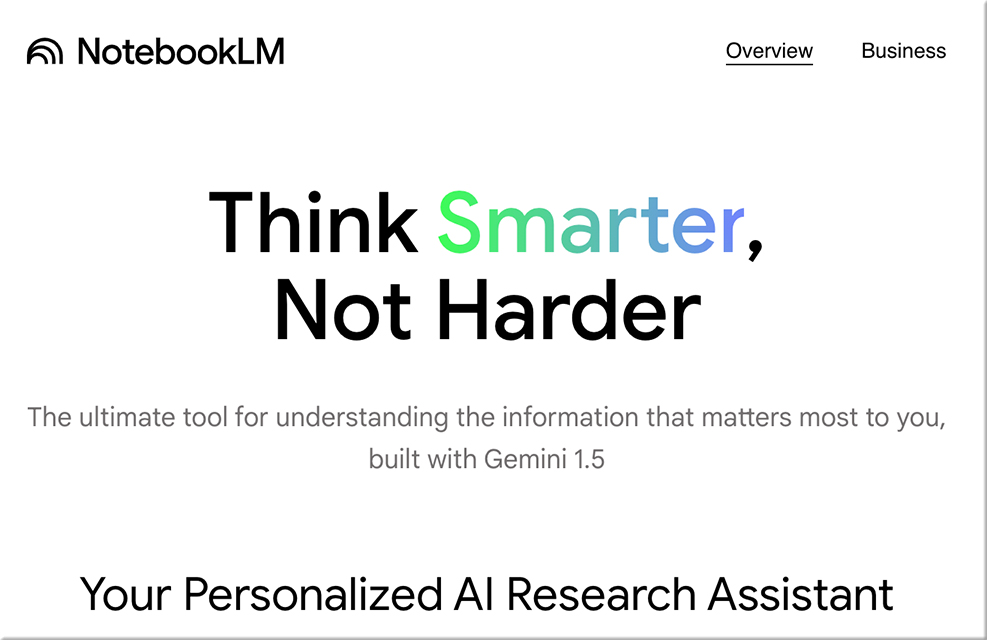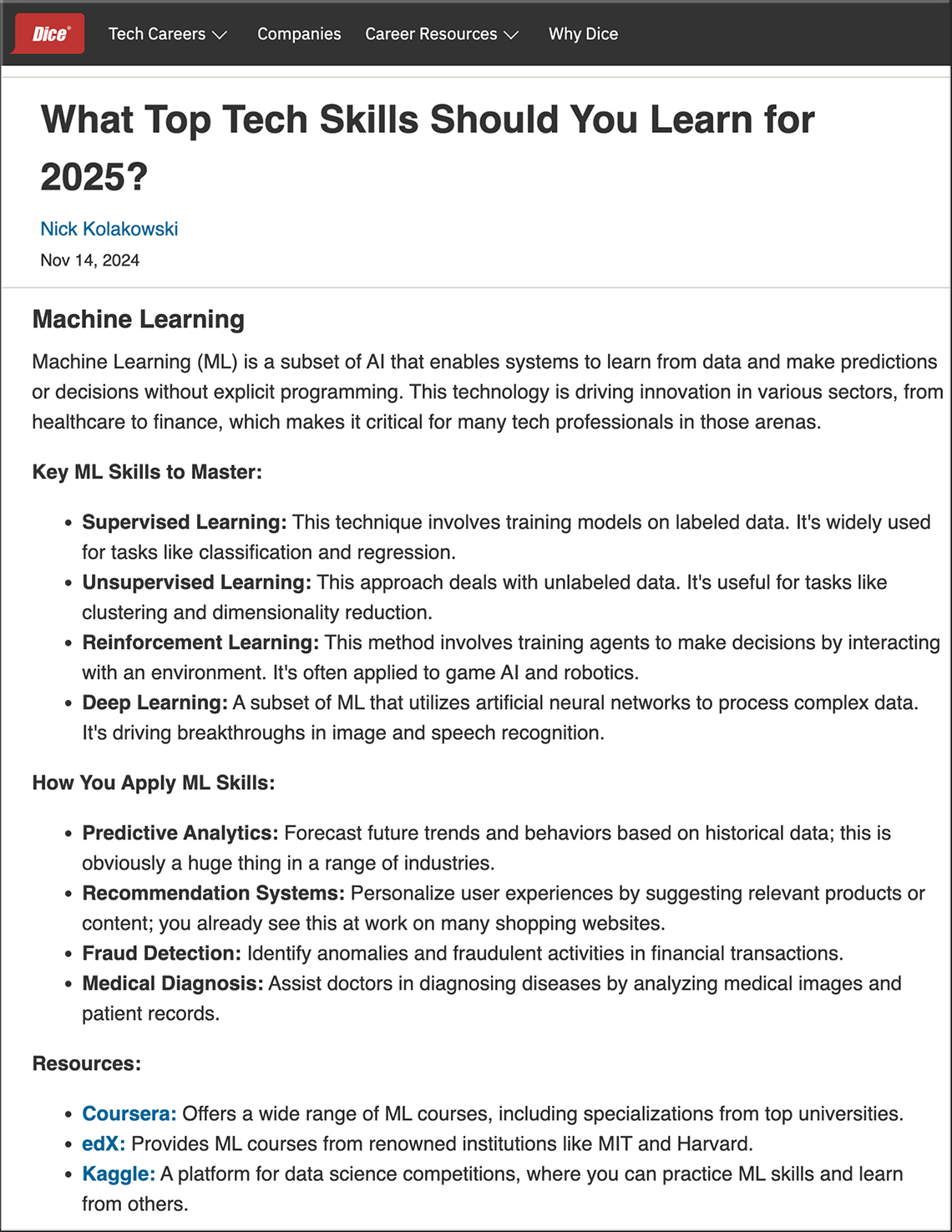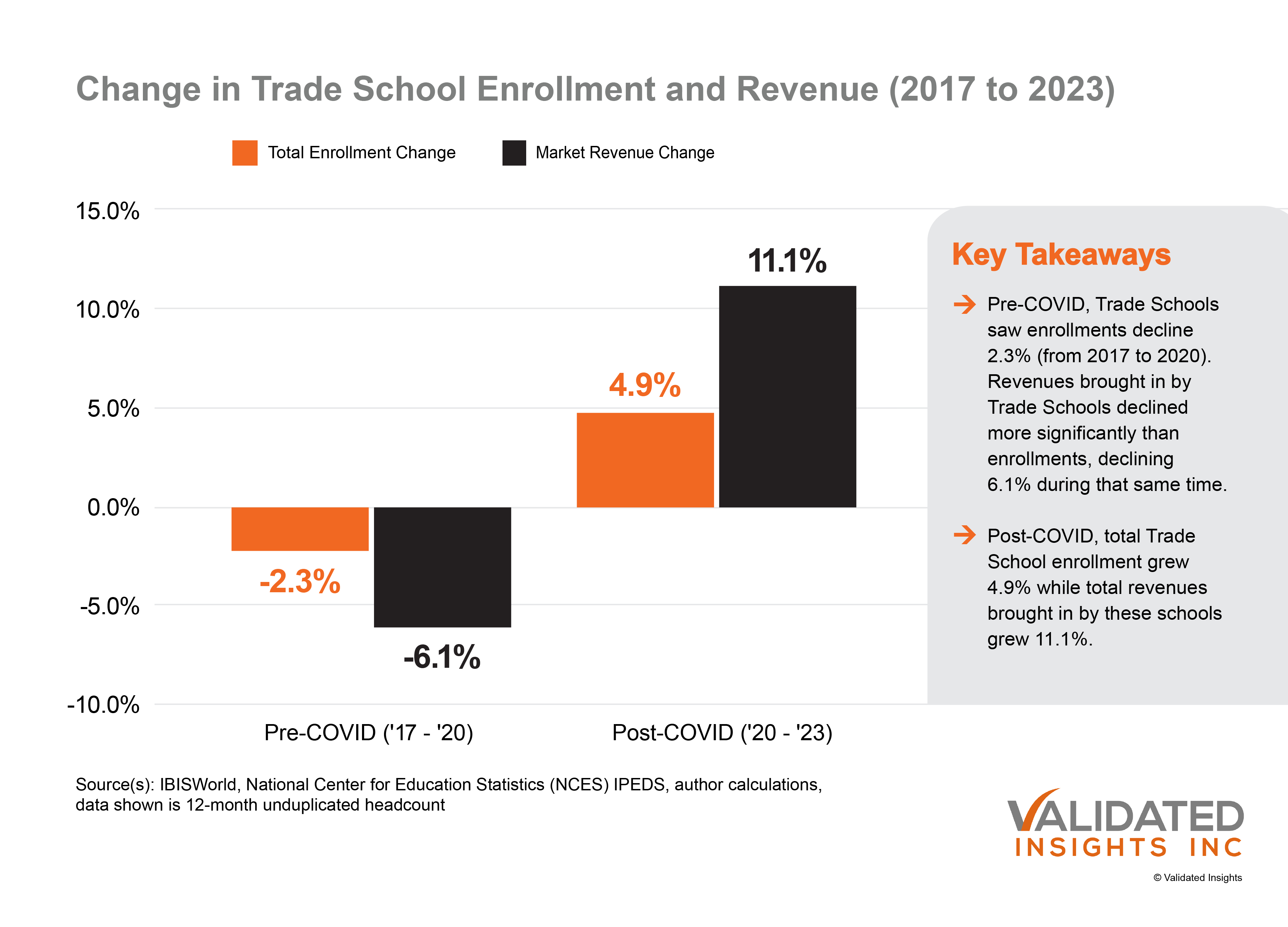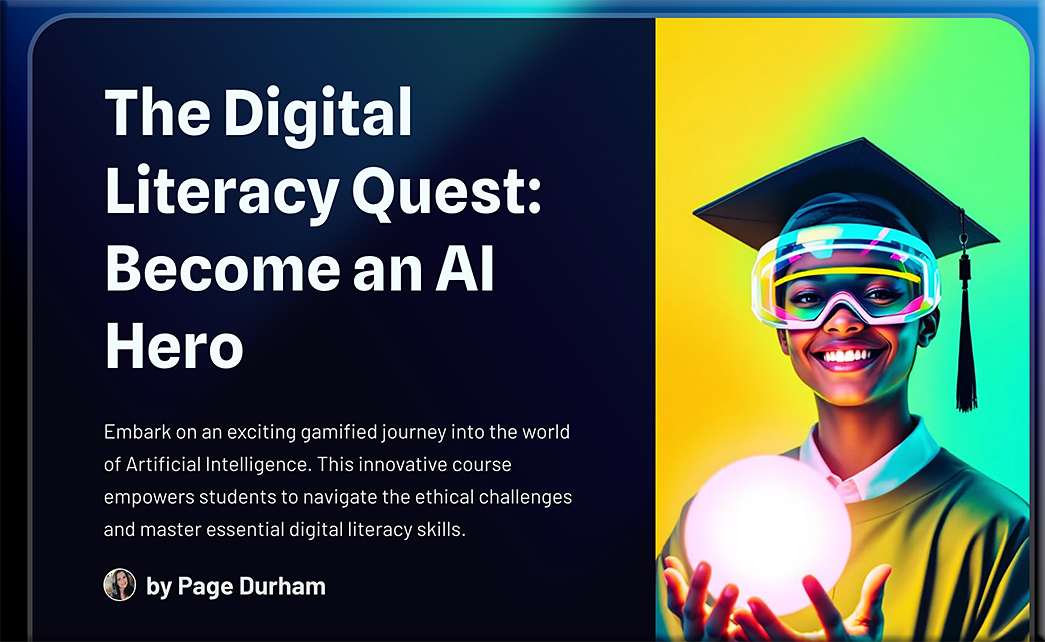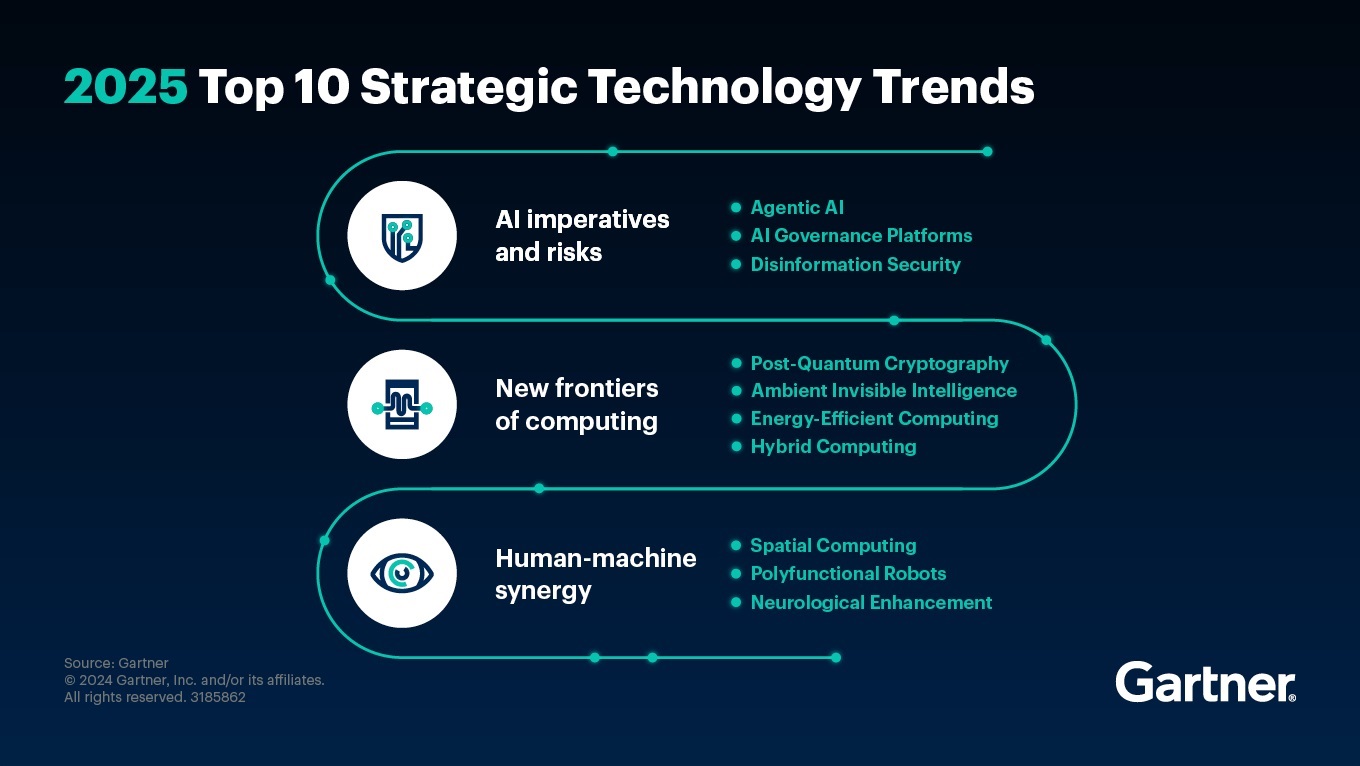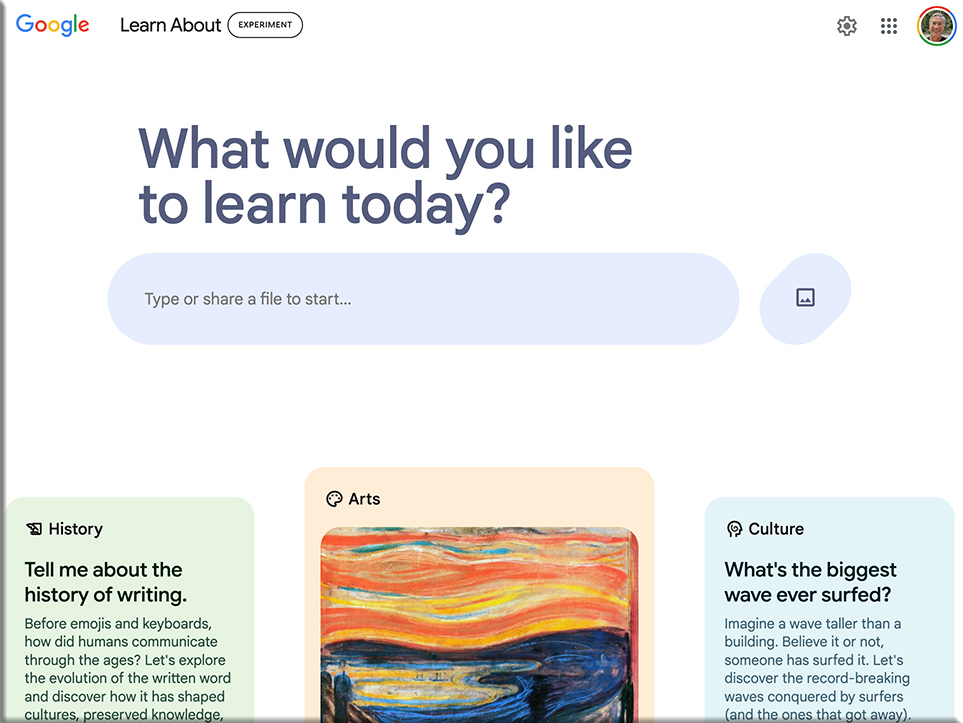From DSC:
Notebook LM continues to make waves…
Hopping on the Affordability Bandwagon — from insidehighered.com by Liam Knox
Five selective colleges launched strikingly similar student aid initiatives last week for low- and middle-income students. What’s behind the frenzy to boost financial aid?
The announcements have come pouring in at a time when public resentment of elite institutions has reached a fever pitch, doubts about the value of college are at a historic high and the impact of the Supreme Court’s affirmative action ruling on demographics is becoming clear. And after last year’s bungled FAFSA rollout, families are warier than ever of financial aid promises.
“We know what’s going on with confidence in higher education, and one element of that is increasing cost and increasing debt levels,” said James Milliken, chancellor of the UT system.
It’s part of a broader marketing and recruitment effort to raise awareness of the financial aid resources at colleges with staggeringly high sticker prices—she calls it a “clear cost” initiative. And as more colleges expand financial aid, it creates a domino effect among peer institutions looking to compete for highly qualified applicants from lower income brackets, she said.
Tania LaViolet, director of research and innovation at the Aspen Institute
From DSC:
First of all, when you look at the following posting:
What Top Tech Skills Should You Learn for 2025? — from dice.com by Nick Kolakowski
…you will see that they outline which skills you should consider mastering in 2025 if you want to stay on top of the latest career opportunities. They then list more information about the skills, how you apply the skills, and WHERE to get those skills.
I assert that in the future, people will be able to see this information on a 24x7x365 basis.
- Which jobs are in demand?
- What skills do I need to do those jobs?
- WHERE do I get/develop those skills?
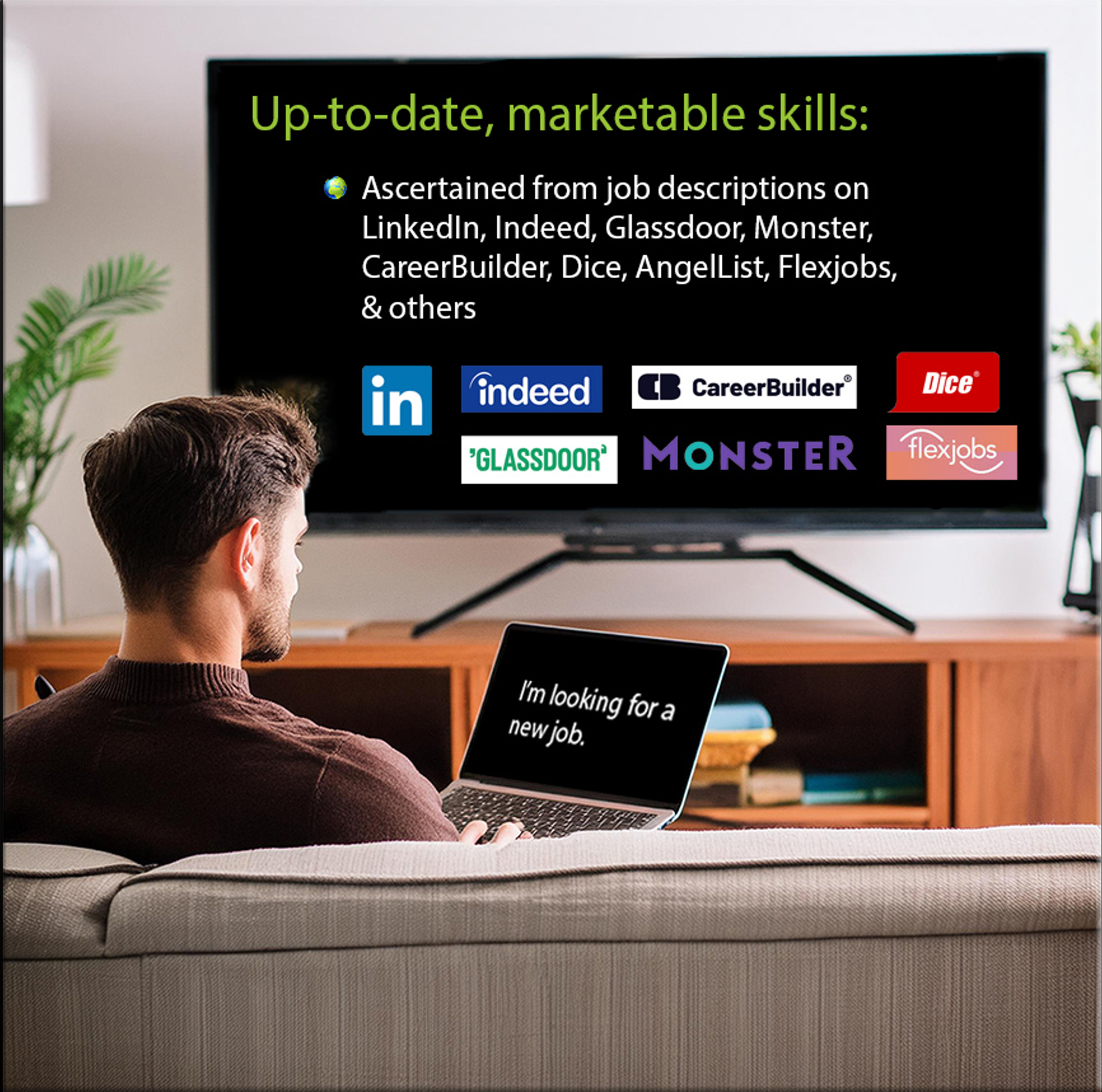
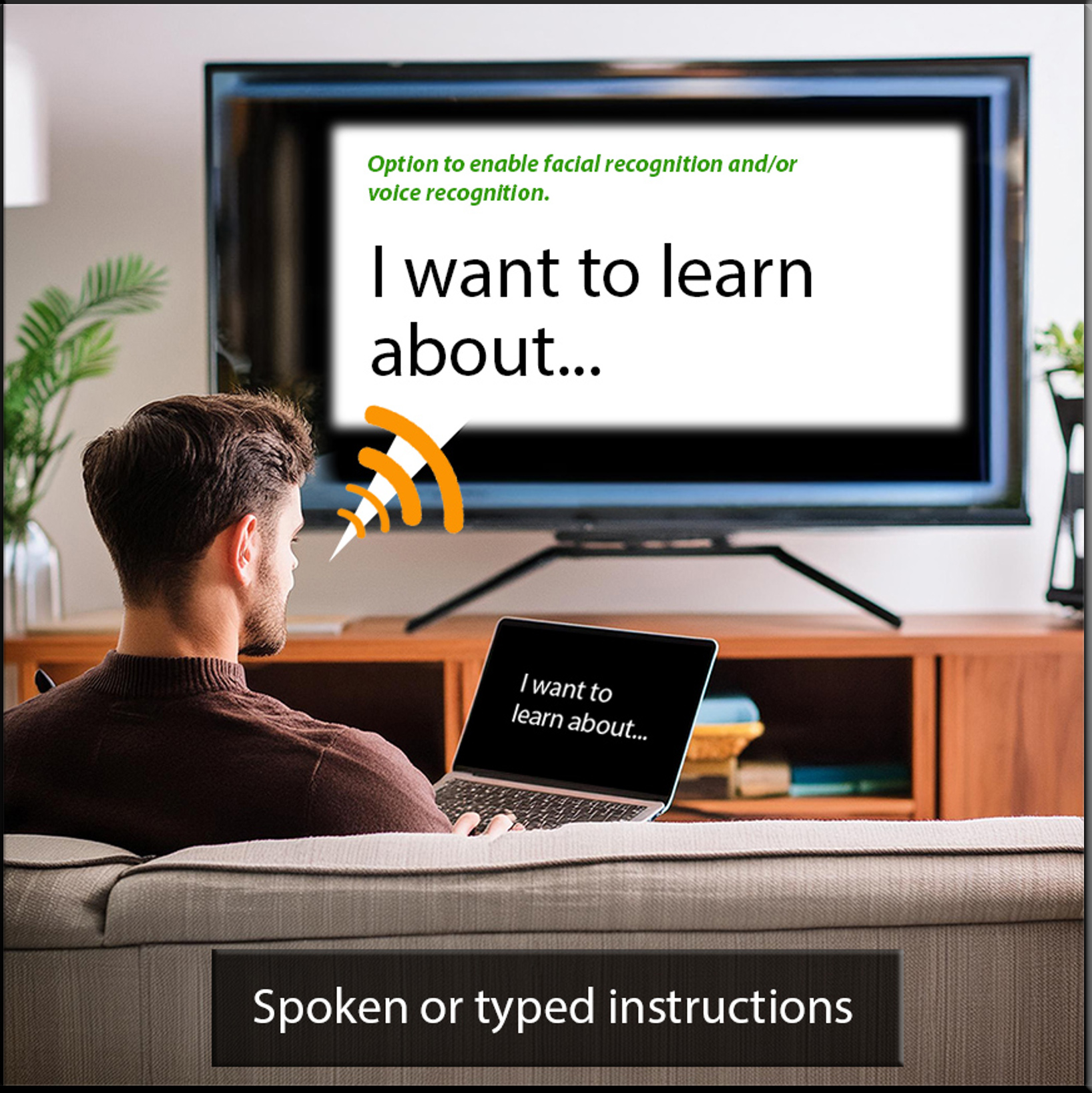
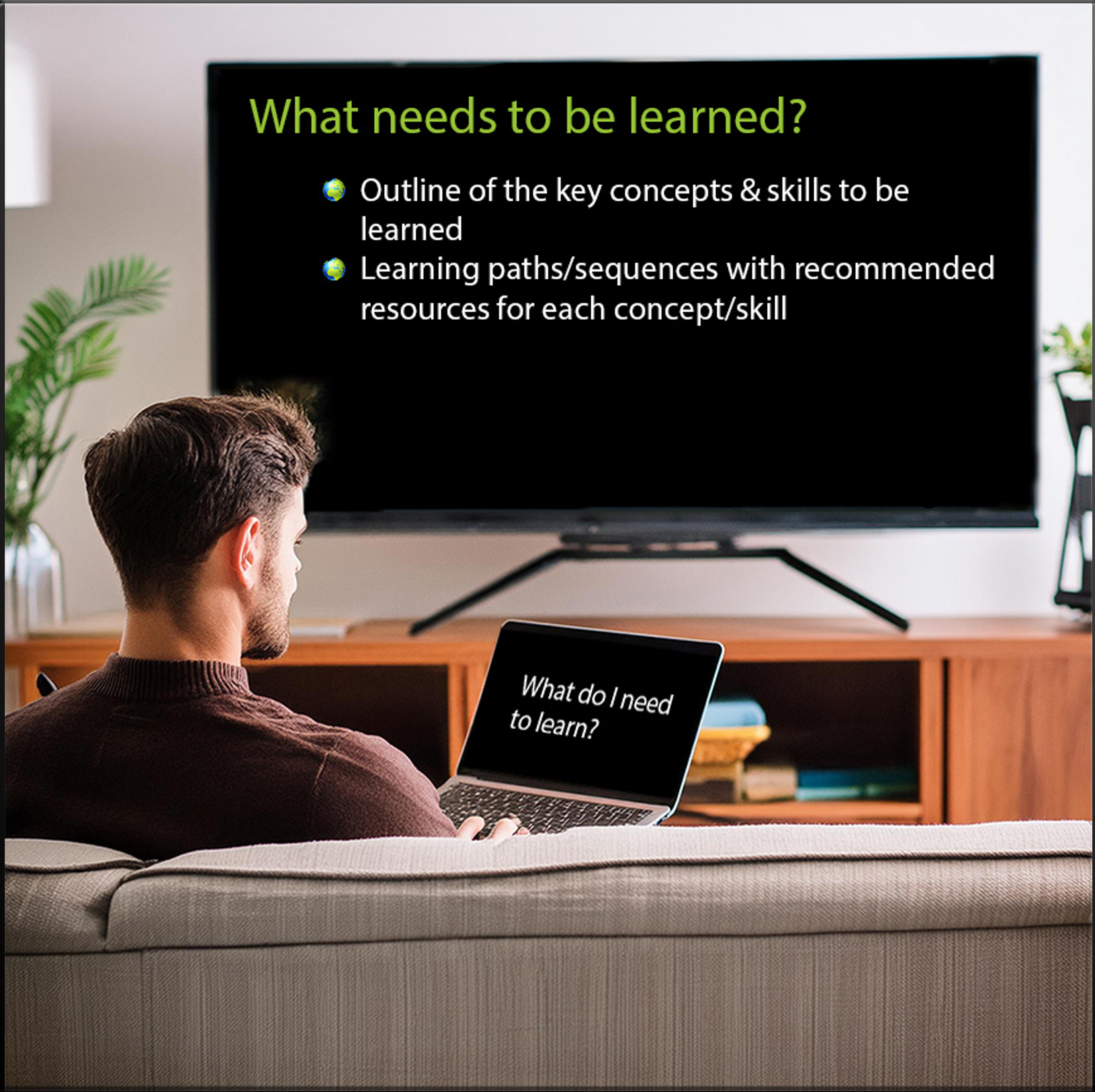
And that last part (about the WHERE do I develop those skills) will pull from many different institutions, people, companies, etc.
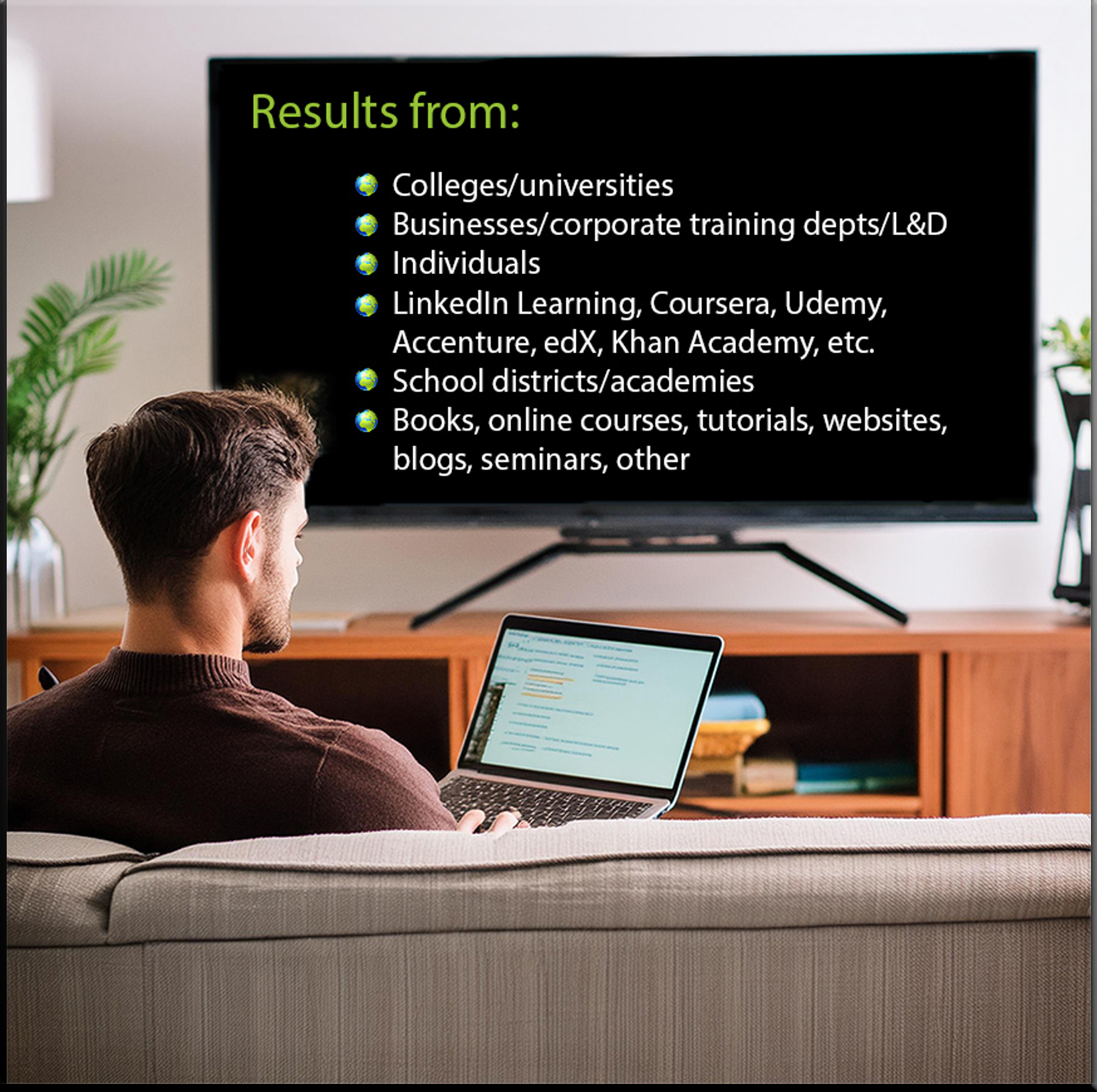
BUT PEOPLE are the key! Oftentimes, we need to — and prefer to — learn with others!

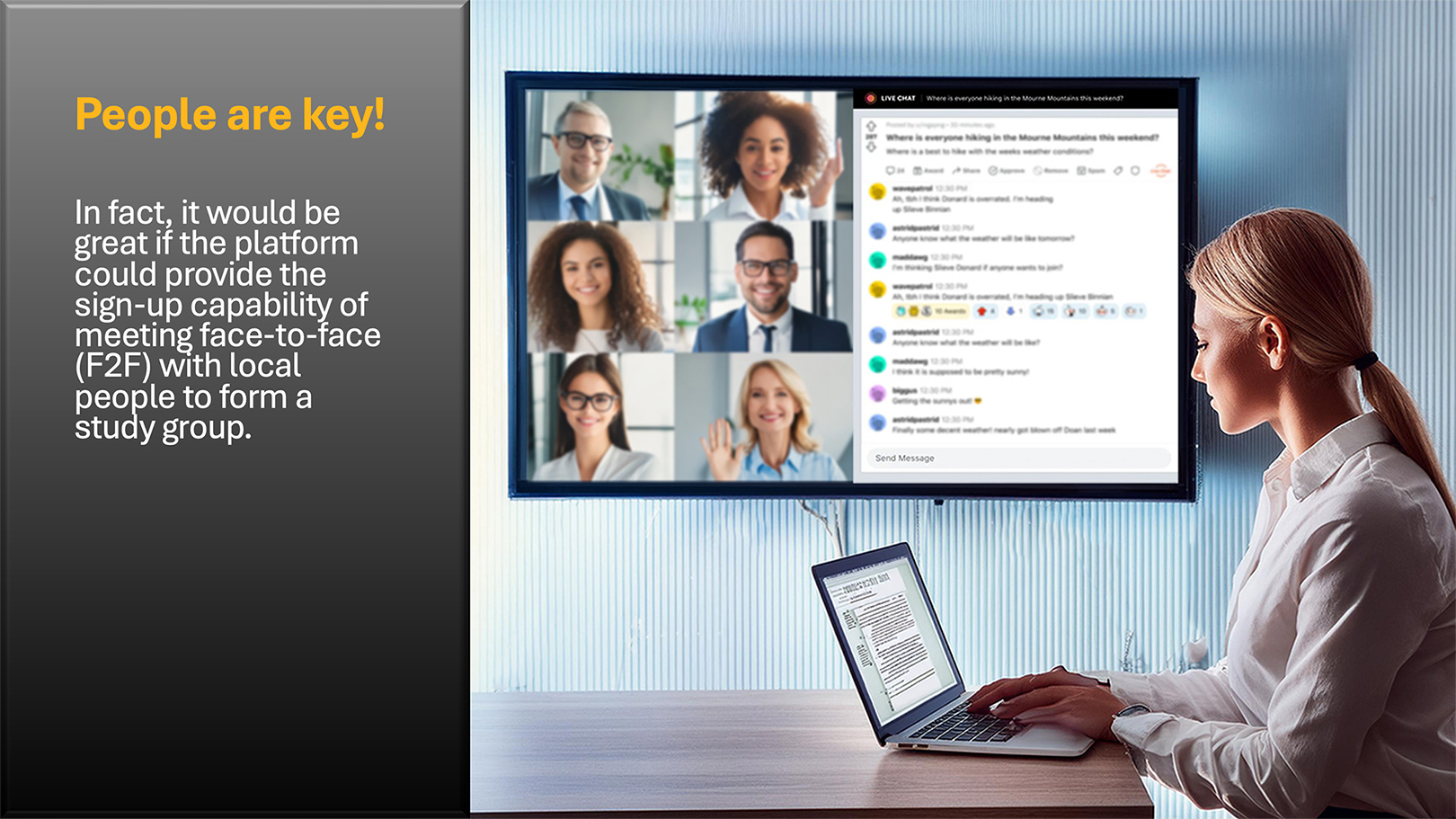
Trade School Enrollment Surges Post-Pandemic, Outpacing Traditional Universities — from businesswire.com
New Report Highlights Growth in Healthcare and Culinary Arts Programs
CHICAGO–(BUSINESS WIRE)–A new report released today by Validated Insights, a higher education marketing firm, reveals a significant increase in trade school enrollment following the pandemic, with a 4.9% growth from 2020 to 2023. This surge contrasts sharply with a 0.6% decline in university enrollment during the same period, highlighting a growing preference for career-focused education.
…
The report highlights the diverse landscape of trade schools, with varying enrollment trends across different categories and subtypes. While some sectors face challenges, others, like Culinary Arts and Beauty and Wellness, present significant growth opportunities and shifting student attitudes.
A trend colleges might not want applicants to notice: It’s becoming easier to get in — from hechingerreport.orgby Jon Marcus
Despite public perception, and for the first time in decades, acceptance rates are going up
As enrollment in colleges and universities continues to decline — down by more than 2 million students, or 10 percent, in the 10 years ending 2022 — they’re not only casting wider nets. Something else dramatic is happening to the college application process, for the first time in decades:
It’s becoming easier to get in.
Colleges and universities, on average, are admitting a larger proportion of their applicants than they did 20 years ago, new research by the conservative think tank the American Enterprise Institute finds.
The Edtech Insiders Generative AI Map — from edtechinsiders.substack.com by Ben Kornell, Alex Sarlin, Sarah Morin, and Laurence Holt
A market map and database featuring 60+ use cases for GenAI in education and 300+ GenAI powered education tools.
A Student’s Guide to Writing with ChatGPT— from openai.com
Used thoughtfully, ChatGPT can be a powerful tool to help students develop skills of rigorous thinking and clear writing, assisting them in thinking through ideas, mastering complex concepts, and getting feedback on drafts.
There are also ways to use ChatGPT that are counterproductive to learning—like generating an essay instead of writing it oneself, which deprives students of the opportunity to practice, improve their skills, and grapple with the material.
For students committed to becoming better writers and thinkers, here are some ways to use ChatGPT to engage more deeply with the learning process.
Community Colleges Are Rolling Out AI Programs—With a Boost from Big Tech — from workshift.org by Colleen Connolly
The Big Idea: As employers increasingly seek out applicants with AI skills, community colleges are well-positioned to train up the workforce. Partnerships with tech companies, like the AI Incubator Network, are helping some colleges get the resources and funding they need to overhaul programs and create new AI-focused ones.
Along these lines also see:
Practical AI Training — from the-job.beehiiv.com by Paul Fain
Community colleges get help from Big Tech to prepare students for applied AI roles at smaller companies.
Miami Dade and other two-year colleges try to be nimble by offering training for AI-related jobs while focusing on local employers. Also, Intel’s business struggles while the two-year sector wonders if Republicans will cut funds for semiconductor production.
Can One AI Agent Do Everything? How To Redesign Jobs for AI? HR Expertise And A Big Future for L&D. — from joshbersin.com by Josh Bersin
Here’s the AI summary, which is pretty good.
In this conversation, Josh Bersin discusses the evolving landscape of AI platforms, particularly focusing on Microsoft’s positioning and the challenges of creating a universal AI agent. He delves into the complexities of government efficiency, emphasizing the institutional challenges faced in re-engineering government operations.
The conversation also highlights the automation of work tasks and the need for businesses to decompose job functions for better efficiency.
Bersin stresses the importance of expertise in HR, advocating for a shift towards full stack professionals who possess a broad understanding of various HR functions.
Finally, he addresses the impending disruption in Learning and Development (L&D) due to AI advancements, predicting a significant transformation in how L&D professionals will manage knowledge and skills.
Integrating Active Learning in Large STEM Lectures — from scholarlyteacher.com by Gabriele Pinto
Key Statement: Implementing elements of active learning into a large course may seem daunting task, but think-pair-share aided by quizzing and clickers can be done in any size classroom.
Many teachers do not realize how seamless it can be to shift their lectures towards a more active learning environment. In this article, we looked at how think-pair-share (TPS) is a simple activity that can be easily introduced and integrated within a lecture framework. We also explored how clickers and quizzing may fit into course design to provide greater tools of participation for the students and enrich their classroom experience and study patterns. These implementations, which do not involve drastic and daunting changes to lecturing, will improve student engagement and learning, and will allow the instructor to better gauge the state of the class, evaluate and adjust content pacing accordingly, and enrich his own teaching experience, as well as the students’ education.
Being a College Athlete Now Means Constant Travel and Missed Classes — from nytimes.com by Billy Witz; via Ryan Craig
Players are dealing with far-flung travel, jet lag and the pressures of trying to balance the roles of student, athlete and entrepreneur more than ever before.
Playing football this season for the U.C.L.A. Bruins means being a frequent (and distant) flier. The team began the campaign in August with a win at the University of Hawaii. Their next road games sent the Bruins to Louisiana State, then Penn State, and back across the country to Rutgers. Then, a trip to Nebraska on Saturday and a jaunt up to Washington.
Such is the life of the modern-day college athlete, with U.C.L.A. moving into the Big Ten Conference, the erstwhile standard-bearer for Midwest football that now stretches from Piscataway to Puget Sound.
In all, the Bruins will travel 22,226 miles this season — nearly enough to circumnavigate the globe. It is the equivalent of 33 round trips to the Bay Area to play Stanford or U.C. Berkeley, U.C.L.A.’s former rivals that have moved to a newly bicoastal league of their own.
Longer trips for games, extra missed classes and the effects of jet lag are heaping additional pressure on young adults trying to balance the roles of student, athlete and — in an age when they can cash in on their fame — entrepreneur.
…
The U.S.C. women’s volleyball team, which has four midweek road games, is likely to miss at least 12 days of classes.
“The Value of Doing Things: What AI Agents Mean for Teachers” — from nickpotkalitsky.substack.com by guest author Jason Gulya, Professor of English and Applied Media at Berkeley College in New York City
AI Agents make me nervous. Really nervous.
I wish they didn’t.
I wish I could write that the last two years have made me more confident, more self-assured that AI is here to augment workers rather than replace them.
But I can’t.
I wish I could write that I know where schools and colleges will end up. I wish I could say that AI Agents will help us get where we need to be.
But I can’t.
At this point, today, I’m at a loss. I’m not sure where the rise of AI agents will take us, in terms of how we work and learn. I’m in the question-asking part of my journey. I have few answers.
So, let’s talk about where (I think) AI Agents will take education. And who knows? Maybe as I write I’ll come up with something more concrete.
It’s worth a shot, right?
From DSC:
I completely agree with Jason’s following assertion:
A good portion of AI advancement will come down to employee replacement. And AI Agents push companies towards that.
THAT’s where/what the ROI will be for corporations. They will make their investments up in the headcount area, and likely in other areas as well (product design, marketing campaigns, engineering-related items, and more). But how much time it takes to get there is a big question mark.
One last quote here…it’s too good not to include:
Behind these questions lies a more abstract, more philosophical one: what is the relationship between thinking and doing in a world of AI Agents and other kinds of automation?
How Good are Claude, ChatGPT & Gemini at Instructional Design? — from drphilippahardman.substack.com by Dr Philippa Hardman
A test of AI’s Instruction Design skills in theory & in practice
By examining models across three AI families—Claude, ChatGPT, and Gemini—I’ve started to identify each model’s strengths, limitations, and typical pitfalls.
Spoiler: my findings underscore that until we have specialised, fine-tuned AI copilots for instructional design, we should be cautious about relying on general-purpose models and ensure expert oversight in all ID tasks.

From DSC — I’m going to (have Nick) say this again:
I simply asked my students to use AI to brainstorm their own learning objectives. No restrictions. No predetermined pathways. Just pure exploration. The results? Astonishing.Students began mapping out research directions I’d never considered. They created dialogue spaces with AI that looked more like intellectual partnerships than simple query-response patterns.
The Digital Literacy Quest: Become an AI Hero — from gamma.app
From DSC:
I have not gone through all of these online-based materials, but I like what they are trying to get at:
- Confidence with AI
Students gain practical skills and confidence in using AI tools effectively. - Ethical Navigation
Learn to navigate the ethical landscape of AI with integrity and responsibility. Make informed decisions about AI usage. - Mastering Essential Skills
Develop critical thinking and problem-solving skills in the context of AI.
Expanding access to the Gemini app for teen students in education — from workspaceupdates.googleblog.com
Google Workspace for Education admins can now turn on the Gemini app with added data protection as an additional service for their teen users (ages 13+ or the applicable age in your country) in the following languages and countries. With added data protection, chats are not reviewed by human reviewers or otherwise used to improve AI models. The Gemini app will be a core service in the coming weeks for Education Standard and Plus users, including teens,
5 Essential Questions Educators Have About AI — from edsurge.com by Annie Ning
Recently, I spoke with several teachers regarding their primary questions and reflections on using AI in teaching and learning. Their thought-provoking responses challenge us to consider not only what AI can do but what it means for meaningful and equitable learning environments. Keeping in mind these reflections, we can better understand how we move forward toward meaningful AI integration in education.
FrontierMath: A Benchmark for Evaluating Advanced Mathematical Reasoning in AI — from epoch.ai
FrontierMath presents hundreds of unpublished, expert-level mathematics problems that specialists spend days solving. It offers an ongoing measure of AI complex mathematical reasoning progress.
We’re introducing FrontierMath, a benchmark of hundreds of original, expert-crafted mathematics problems designed to evaluate advanced reasoning capabilities in AI systems. These problems span major branches of modern mathematics—from computational number theory to abstract algebraic geometry—and typically require hours or days for expert mathematicians to solve.
Rising demand for AI courses in UK universities shows 453% growth as students adapt to an AI-driven job market — from edtechinnovationhub.com
The demand for artificial intelligence courses in UK universities has surged dramatically over the past five years, with enrollments increasing by 453%, according to a recent study by Currys, a UK tech retailer.
The study, which analyzed UK university admissions data and surveyed current students and recent graduates, reveals how the growing influence of AI is shaping students’ educational choices and career paths.
This growth reflects the broader trend of AI integration across industries, creating new opportunities while transforming traditional roles. With AI’s influence on career prospects rising, students and graduates are increasingly drawn to AI-related courses to stay competitive in a rapidly changing job market.
Is Generative AI and ChatGPT healthy for Students? — from ai-supremacy.com by Michael Spencer and Nick Potkalitsky
Beyond Text Generation: How AI Ignites Student Discovery and Deep Thinking, according to firsthand experiences of Teachers and AI researchers like Nick Potkalitsky.
After two years of intensive experimentation with AI in education, I am witnessing something amazing unfolding before my eyes. While much of the world fixates on AI’s generative capabilities—its ability to create essays, stories, and code—my students have discovered something far more powerful: exploratory AI, a dynamic partner in investigation and critique that’s transforming how they think.
…
They’ve moved beyond the initial fascination with AI-generated content to something far more sophisticated: using AI as an exploratory tool for investigation, interrogation, and intellectual discovery.
…
Instead of the much-feared “shutdown” of critical thinking, we’re witnessing something extraordinary: the emergence of what I call “generative thinking”—a dynamic process where students learn to expand, reshape, and evolve their ideas through meaningful exploration with AI tools. Here I consciously reposition the term “generative” as a process of human origination, although one ultimately spurred on by machine input.
A Road Map for Leveraging AI at a Smaller Institution — from er.educause.edu by Dave Weil and Jill Forrester
Smaller institutions and others may not have the staffing and resources needed to explore and take advantage of developments in artificial intelligence (AI) on their campuses. This article provides a roadmap to help institutions with more limited resources advance AI use on their campuses.
The following activities can help smaller institutions better understand AI and lay a solid foundation that will allow them to benefit from it.
- Understand the impact…
- Understand the different types of AI tools…
- Focus on institutional data and knowledge repositories…
Smaller institutions do not need to fear being left behind in the wake of rapid advancements in AI technologies and tools. By thinking intentionally about how AI will impact the institution, becoming familiar with the different types of AI tools, and establishing a strong data and analytics infrastructure, institutions can establish the groundwork for AI success. The five fundamental activities of coordinating, learning, planning and governing, implementing, and reviewing and refining can help smaller institutions make progress on their journey to use AI tools to gain efficiencies and improve students’ experiences and outcomes while keeping true to their institutional missions and values.
Also from Educause, see:
- From Hype to Help: Making GenAI Useful for Enterprise Reporting and Data Analytics — from er.educause.edu by Craig Rudick
AI school opens – learners are not good or bad but fast and slow — from donaldclarkplanb.blogspot.com by Donald Clark
That is what they are doing here. Lesson plans focus on learners rather than the traditional teacher-centric model. Assessing prior strengths and weaknesses, personalising to focus more on weaknesses and less on things known or mastered. It’s adaptive, personalised learning. The idea that everyone should learn at the exactly same pace, within the same timescale is slightly ridiculous, ruled by the need for timetabling a one to many, classroom model.
For the first time in the history of our species we have technology that performs some of the tasks of teaching. We have reached a pivot point where this can be tried and tested. My feeling is that we’ll see a lot more of this, as parents and general teachers can delegate a lot of the exposition and teaching of the subject to the technology. We may just see a breakthrough that transforms education.
Agentic AI Named Top Tech Trend for 2025 — from campustechnology.com by David Ramel
Agentic AI will be the top tech trend for 2025, according to research firm Gartner. The term describes autonomous machine “agents” that move beyond query-and-response generative chatbots to do enterprise-related tasks without human guidance.
…
More realistic challenges that the firm has listed elsewhere include:
-
- Agentic AI proliferating without governance or tracking;
- Agentic AI making decisions that are not trustworthy;
- Agentic AI relying on low-quality data;
- Employee resistance; and
- Agentic-AI-driven cyberattacks enabling “smart malware.”
Also from campustechnology.com, see:
- New OpenAI Swarm Framework Offers Experimental Tool for Multi-Agent AI Networks — by John K. Waters
OpenAI has introduced a new open source framework designed to simplify the development and management of multi-agent AI systems that can collaborate autonomously to perform tasks.
Three items from edcircuit.com:
- The Top 10 AI Tools for Enhancing Learning
- Revolutionizing Lesson Planning: How AI Teaching Assistants Bring Creativity and Efficiency to the Classroom
- Maximizing Student Success: How Artificial Intelligence is Revolutionizing K12 Coaching
All or nothing at Educause24 — from onedtech.philhillaa.com by Kevin Kelly
Looking for specific solutions at the conference exhibit hall, with an educator focus
Here are some notable trends:
- Alignment with campus policies: …
- Choose your own AI adventure: …
- Integrate AI throughout a workflow: …
- Moving from prompt engineering to bot building: …
- More complex problem-solving: …
…
Not all AI news is good news. In particular, AI has exacerbated the problem of fraudulent enrollment–i.e., rogue actors who use fake or stolen identities with the intent of stealing financial aid funding with no intention of completing coursework.
…
The consequences are very real, including financial aid funding going to criminal enterprises, enrollment estimates getting dramatically skewed, and legitimate students being blocked from registering for classes that appear “full” due to large numbers of fraudulent enrollments.
Boosting Student Engagement with Interactive and Practical Teaching Methods — from campustechnology.com by Dr. Lucas Long
One of my biggest goals as an educator is to show students how the material they learn in class can be applied to real-world situations. In my finance courses, this often means taking what we’re learning about financial calculations and connecting it to decisions they’ll have to make as adults. For example, I’ve used real-life scenarios like buying a car with a loan, paying off student debt, saving for a wedding, or calculating mortgage payments for a future home purchase. I even use salary data to show students what they could realistically afford given average salaries after graduation, helping them relate to the financial decisions they will face after college.
These practical examples don’t just keep students engaged; they also demonstrate the immediate value of learning financial principles. I often hear students express frustration when they feel like they’re learning concepts that won’t apply to their lives. But when I use real scenarios and provide tools like financial calculators to show them exactly how they’ll use this knowledge in their future, their attitude changes. They become more motivated to engage with the material because they see its relevance beyond the classroom.
Undergraduate enrollment rises 3% despite drop in first-year students, early data shows — from highereddive.com by Laura Spitalniak
Headcounts declined among students attending college directly after high school, the National Student Clearinghouse Research Center found.
Dive Brief:
- Undergraduate enrollment rose this fall for the second year in a row, up 3% compared to similar early data from fall 2023, according to preliminary figures released Wednesday by the National Student Clearinghouse Research Center.
- Enrollment jumped 1.9% in bachelor’s degree programs and 4.3% in those for associate degrees. While all credential types saw gains, the number of undergraduate certificate seekers increased the most, at 7.3%.
- However, enrollment among first-year students shrank 5%, the first dip since the decline seen at the start of the pandemic. Declining enrollment among 18-year-olds — a proxy for students who attend college directly after high school — accounted for most of that drop, the clearinghouse said.
What preliminary enrollment data from fall 2024 tells us — from highereddive.com by Laura Spitalniak
Higher education experts broke down some trends in the early data and what may have prompted the decline in first-year students.
Higher education news tends to be a mixed bag, and the most recent enrollment report from the National Student Clearinghouse Research Center is no exception.
Last week, the clearinghouse released preliminary findings for fall 2024 and found that undergraduate enrollment rose 3% compared with early data from last year. On the other hand, it showed enrollment among first-year students dropped 5% compared with the year before, the first decline since the drop at the start of the pandemic.
The youngest adults, 18-year-olds, drove a majority of the decrease, according to the clearinghouse. Its researchers used this group as a proxy for students who enroll in postsecondary education directly after they graduate high school, it said.
AI Tutors Double Rates of Learning in Less Learning Time — by drphilippahardman.substack.com Dr. Philippa Hardman
Inside Harvard’s new groundbreaking study
Conclusion
This Harvard study provides robust evidence that AI tutoring, when thoughtfully designed, can significantly enhance learning outcomes. The combination of doubled learning gains, increased engagement, and reduced time to competency suggests we’re seeing just the beginning of AI’s potential in education and that its potential is significant.
If this data is anything to go by, and if we – as humans – are open and willing to acting on it, it’s possible AI will have a significant and for some deeply positive impact on how we design and deliver learning experiences.
That said, as we look forward, the question shouldn’t just be, “how AI can enhance current educational methods?”, but also “how it might AI transform the very nature of learning itself?”. With continued research and careful implementation, we could be moving toward an era of education that’s more effective but also more accessible than ever before.
Three Quick Examples of Teaching with and about Generative AI — from derekbruff.org Derek Bruff
- Text-to-Podcast.
- Assigning Students to Groups.
- AI Acceptable Use Scale.
Also from Derek’s blog, see:
- Three Recent Studies on Student Learning with Generative AI
- How Do We Define Quality Student Work in an Age of AI?
From Mike Sharples on LinkedIn:
ChatGPT’s free voice wizard — from wondertools.substack.com by Jeremy Caplan
How and why to try the new Advanced Voice Mode
7 surprisingly practical ways to use voice AI
Opening up ChatGPT’s Advanced Voice Mode (AVM) is like conjuring a tutor eager to help with whatever simple — or crazy — query you throw at it. Talking is more fluid and engaging than typing, especially if you’re out and about. It’s not a substitute for human expertise, but AVM provides valuable machine intelligence.
- Get a virtual museum tour. …
- Chat with historical figures….
- Practice languages. …
- Explore books. …
- Others…
Though not AI-related, this is along the lines of edtech:
- MoodleMoot Global 24 Conference Notes — from onedtech.philhillaa.com by Glenda Morgan
A first look at Moodle under new leadership
Here’s the link to access it: https://t.co/kHq0S2r4aD
It’s only available in the US at the moment, but it works with a VPN.
Truly the best tool for learning a new subject I’ve tried so far.
— Paul Couvert (@itsPaulAi) October 31, 2024
…which links to:
2025 EDUCAUSE Top 10: Restoring Trust — from educause.edu
Higher education has a trust problem. In the past ten years, the share of Americans who are confident in higher education has dropped from 57 percent to 36 percent.
Colleges and universities need to show that they understand and care about students, faculty, staff, and community members, AND they need to work efficiently and effectively.
Technology leaders can help. The 2025 EDUCAUSE Top 10 describes how higher education technology and data leaders and professionals can help to restore trust in the sector by building competent and caring institutions and, through radical collaboration, leverage the fulcrum of leadership to maintain balance between the two.
.

The Uberfication of Higher Ed — from evolllution.com by Robert Ubell | Vice Dean Emeritus of Online Learning in the School of Engineering, New York University
As the world of work increasingly relies on the gig economy, higher ed is no different. Many institutions seek to drive down labor costs by hiring contingent works, thereby leaving many faculty in a precarious position and driving down the quality of education.
While some of us are aware that higher ed has been steadily moving away from employing mostly full-time, tenured and tenure-track faculty, replacing them with a part-time, contingent academic workforce, the latest AAUP report issued this summer shows the trend is accelerating. Precarious college teachers have increased by nearly 300,000 over the last decade, as conventional faculty employment stays pretty much flat. It’s part of a national trend in the wider economy that replaces permanent workers with lower paid, contingent staff—members of what we now call the gig economy.
The wide disparity is among the most glaring dysfunctions—along with vast student debt, falling enrollment, rising tuition and other dangers afflicting higher education—but it’s the least acknowledged. Rarely, if ever, does it take its place among the most troubling ails of academic life. It’s a silent disease, its symptoms largely ignored for over half a century.
Do families who send their kids to college, paying increasingly stiff tuition, realize that most of the faculty at our universities are as precarious as Uber drivers?
…
Everyone at the table was taken aback, totally surprised, a sign—even if anecdotal—that this dirty secret is pretty safe. Mass participation of contingent faculty at our universities remains largely obscure, wrapped in a climate of silence, with adjunct faculty perpetuating the quiet by leaving their students mostly uninformed about their working conditions.
From DSC:
The following reflections were catalyzed by Jeff Selingo’s Next posting from 10/22, specifically the item:
- Student fees for athletics, dark money in college sports, and why this all matters to every student, every college.
All of this has big risks for institutions. But whenever I talk to faculty and administrators on campuses about this, many will wave me away and say, “Well, I’m not a college sports fan” or “We’re a Division III school, so that all this doesn’t impact us.”
Nothing is further from the truth, as we explored on a recent episode of the Future U. podcast, where we welcomed in Matt Brown, editor of the Extra Points newsletter, which looks at academic and financial issues in college sports.
As we learned, despite the siloed nature of higher ed, everything is connected to athletics: research, academics, market position. Institutions can rise and fall on the backs of their athletics programs – and we’re not talking about wins and losses, but real budget dollars.
And if you want to know about the impact on students, look no further than the news out of Clemson this week. It is following several other universities in adopting an “athletics fee”: $300 a year. It won’t be the last.
Give a listen to this episode of Future U. if you want to catch up quick on this complicated subject, and while you’re at it, subscribe wherever you get your podcasts.
Clemson approves new athletics fee for students. Here’s what we know — from sports.yahoo.com by Chapel Fowler
How much are student fees at other schools?
That’s true in the state of South Carolina, when comparing the annual fees of Clemson ($300) and USC ($172) to Coastal Carolina ($2,090). And it holds up nationally, too.
DC: Having played a sport at the NCAA Div I collegiate level, I can say sports are out of hand in our country. Increasingly, ALL students are being billed new athletic-related fees. One wonders…in the future, how much will future Ss/parents pay per yr? https://t.co/P64plKVdH2
— Daniel S. Christian (@dchristian5) October 22, 2024
From DSC:
The Bible talks a lot about idols….and I can’t help but wonder, have sports become an idol in our nation?
Don’t get me wrong. Sports can and should be fun for us to play. I played many an hour of sports in my youth and I occasionally play some sports these days. Plus, sports are excellent for helping us keep in shape and take care of our bodies. Sports can help us connect with others and make some fun/good memories with our friends.
So there’s much good to playing sports. But have we elevated sports to places they were never meant to be? To roles they were never meant to play?









